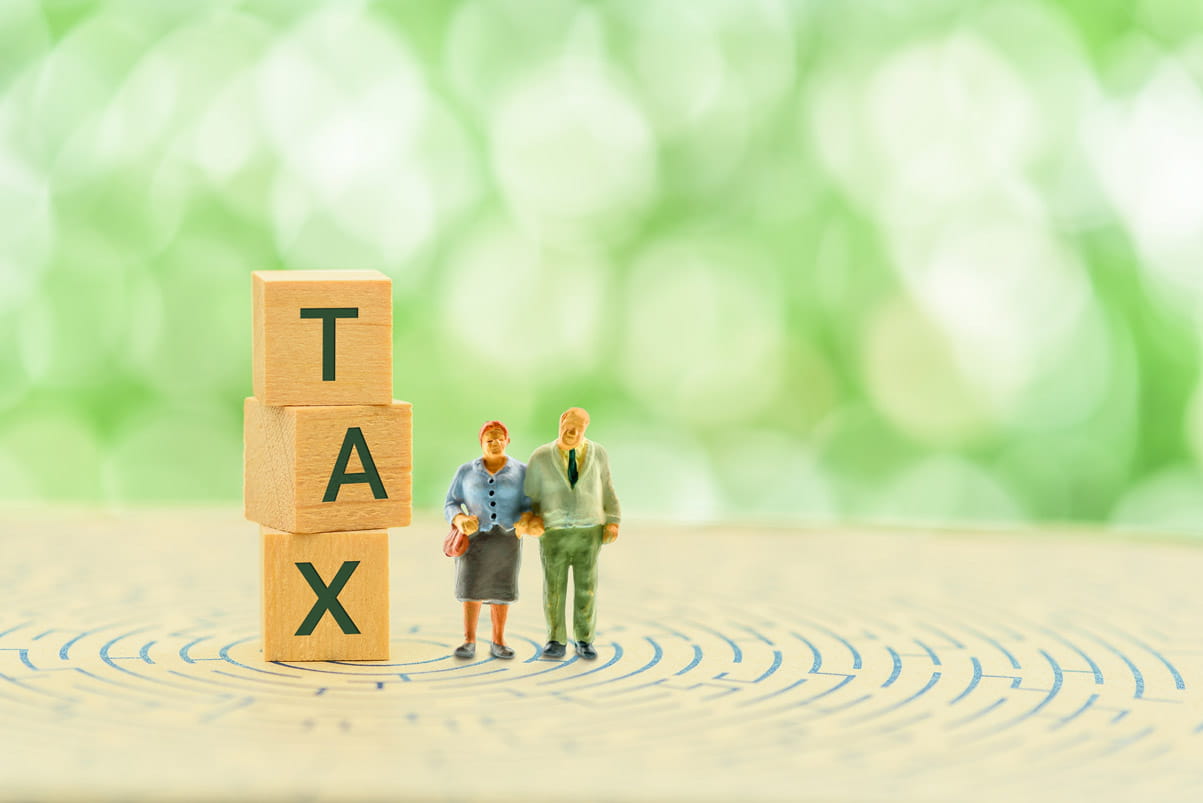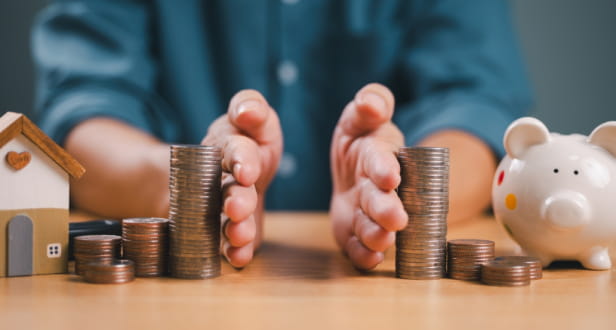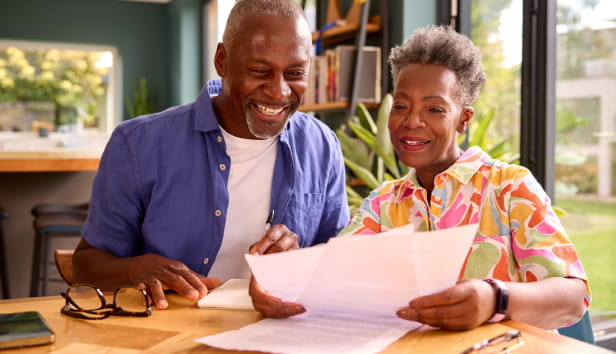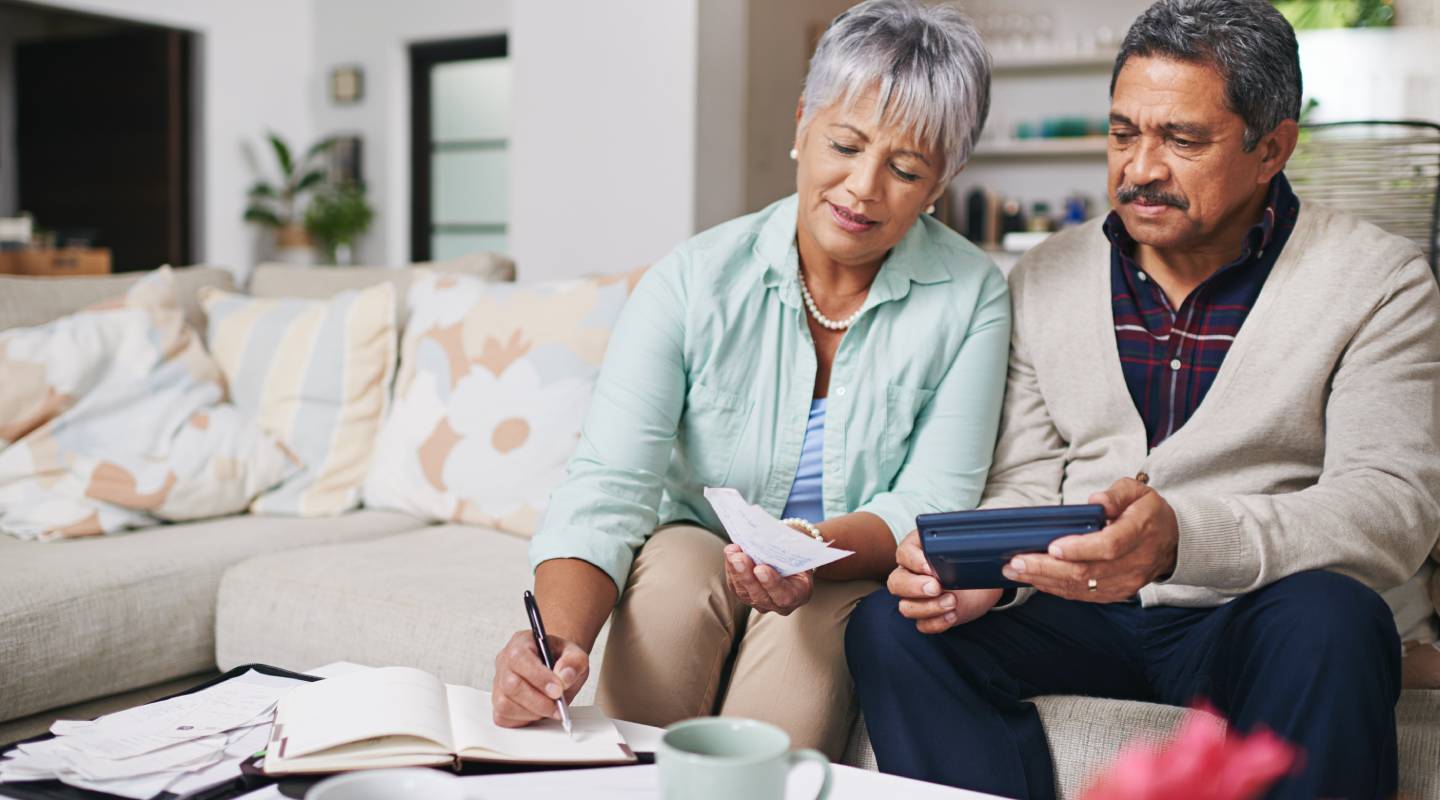
This article is for general guidance only and is not financial or professional advice. Any links are for your own information, and do not constitute any form of recommendation by Saga. You should not solely rely on this information to make any decisions, and consider seeking independent professional advice. All figures and information in this article are correct at the time of publishing, but laws, entitlements, tax treatments and allowances may change in the future.
Some state pensions are already being taxed, and others are set to be taxed from 2027 at the latest, due to the triple lock and frozen income tax thresholds.
Most private pensions are already taxed. Knowing how HMRC treats your retirement savings will help you plan ahead.
What’s on this page?
The state pension has always been treated as taxable income by HMRC. But until very recently, people who only had a state pension and nothing else were typically well below the tax-free allowance, which has been £12,570 a year since 2022, and so paid no income tax.
Steve Webb, partner at pension consultants LCP, says the main thing that has changed recently has been “a combination of a multi-year freeze on income tax allowances and some large cash increases in the value of the state pension due to the triple lock”.
In terms of the new state pension, the current rate of £230.25 per week is £11,973 a year, so within the tax-free allowance of £12,570.
But an increase of 5% or more would take the state pension just above it with effect from 2026. And because the triple lock guarantees a minimum 2.5% increase every year, it is certain that, with just two 2.5% increases, the new state pension will be over the tax threshold in 2027.
Webb adds that most pensioners today are still on the old pension – where “it is perfectly possible for someone with an old basic pension and a significant additional state pension (SERPS) to already be over the tax threshold”.
There is currently a petition to parliament to raise the personal allowance to £20,000 “to help low earners get off benefits and allow pensioners a decent income”. It has got nearly 250,000 signatures, which means it needs to be debated in parliament. This is due to happen on 12 May. But the government has already responded that it has no plans to raise the allowance to £20,000.
So, how do you pay tax if you’re starting to pay it on your pension for the first time? You only pay income tax on pension income above the tax-free allowance threshold. And if you have simple tax affairs – basically nothing HMRC doesn’t already know about – then you won’t have to fill in a tax return.
“Instead HMRC uses a process called ‘simple assessment’ where they do all the sums for you and send you a bill; and for relatively trivial annual bills they probably won’t even bother,” Webb says.
But lots of people have company or private pension income on top of their state pension and so are already taxpayers. Every year of frozen allowances means more and more of their income is taxed. For some, more gets taxed at the higher rates of 40% or above.
Private and workplace pension income is taxed in the same way as other income:
Scotland has different income tax bands and rates, with a lower starter rate of 19% on income between £12,571 and £14,876 and a top rate of 48% on income over £125,140.
Helen Morrissey, head of retirement analysis at Hargreaves Lansdown, explains that if you are in receipt of a workplace pension and are eligible to pay tax, then this will usually be taken automatically from your pension.
The exception is that you can usually take up to 25% of the value of your pension as tax-free cash when you start accessing it.
You can typically take money out of your pension from age 55 onwards, rising to age 57 from April 2028.
There is, however, a complex situation affecting people accessing their pensions for the first time. If you take a lump sum, HMRC may initially apply an ‘emergency’ tax code. This often assumes you'll receive that same amount every month of the tax year. This can lead to people being overtaxed on that first withdrawal.
“This overpayment will be repaid eventually and you can fill in a form to reclaim it more quickly. However, it’s a source of frustration for many retirees and can cause financial issues if they receive less than they need to finance something like a holiday or home renovations, for instance,” Morrissey says.
The government is taking steps to reduce this issue. HMRC has said that as of April 2025 the tax code for customers who are on a temporary tax code should have automatically updated and be on a cumulative code. This means they’ll avoid an overpayment or underpayment at the end of the year.
“It’s a welcome change that will improve things for those taking a regular income in retirement though those taking larger lump sums may still face issues. It’s all going to take time,” says Morrissey.
One big change that has occurred recently is the announcement that unused defined contribution pensions will be subject to inheritance tax (if the overall estate exceeds the nil rate band) from April 2027.
This means that families may be in line to pay inheritance tax at 40% on inherited pensions. However, there are things you can do.
Morrissey explains that any assets passed to a spouse can be passed free of inheritance tax regardless of value. The surviving spouse can also make use of any of their loved ones’ unused allowances (known as nil rate bands). “This means a widow or widower passing a house down to their children or grandchildren can potentially pass on up to £1m free of inheritance tax.”
Families can also make use of various gifting allowances to reduce the value of their estate while they are alive, to reduce their later IHT liability.
Your heirs also pay income tax on any pension pot you leave behind, when they draw the money out, but only if you die aged 75 or over. If you die under 75, it’s free of income tax to them.
Thanks to the frozen income tax thresholds and the triple lock, the number of pensioners paying income tax is soaring. In the 2010/11 tax year, 48% of over-65s paid income tax. By 2023/24 this figure had risen to 65%, according to the Institute of Fiscal Studies
Within this, the number paying higher or additional rate of tax is also fast increasing. Data from HMRC last August showed 2.7 million people aged 60 and over will be brought into the higher rate of income tax in the tax years 2022/23 to 2027/28. And nearly half a million will be brought into the additional rate, paying 45% tax.
By 2027/28, almost half of the 17.9 million people expected to start paying income tax will be over 60 or retired. That’s according to data that wealth manager Quilter obtained in April 2025 from HMRC through a Freedom of Information (FOI) request.
Since 2022/23, ‘fiscal drag’ has already pulled 8.2 million people over 60 into paying tax, highlighting just how many retired or nearly retired people are getting caught up in decisions by successive governments not to increase income tax thresholds.
Pension freedoms – introduced 10 years ago this April – brought in new ways to take retirement income that give you more tax-efficient ways to withdraw from your nest egg.
After taking up to 25% of your pension fund as tax-free cash, you can either:
1. buy an annuity, or
2. move into drawdown.
With drawdown, you can take as much or as little taxable income as you want from your pension pot whenever you want.
Alternatively, says Rachel Vahey, head of public policy at investment firm AJ Bell, if someone doesn’t need all their tax-free cash in one go, they can use an uncrystallised funds pension lump sum (UFPLS) to take a lump sum from their pension pot.
Here a quarter of the amount on each withdrawal taken is tax-free, and the remaining 75% is subject to income tax, along with any other income you have that year.
Vahey explains: “Using UFPLS to gradually access their pension pot offers individuals the ability to control when and how much tax-free cash they choose to take (which may depend on their other income).
“And their remaining unaccessed pension pot stays invested, continuing to (hopefully) grow in value, meaning the amount of tax-free cash they can take from that pot can also increase.
“This demonstrates just how flexible pension income can be. By using a combination of tax-free cash, drawdown and UFPLS, pension savers really can take exactly the right amount of taxed and tax-free funds they need from their pension and cut down on their tax bills.”
The big thing, Vahey says, is to avoid taking more income than you really need at the time. “This can push you into a higher tax bracket and the excess income may end up sitting in a savings account where the interest could end up being taxed,” she says.
Pensioners can also make use of ISA income. Gains inside an ISA, and withdrawals from it, are free of any tax. Using money from ISAs for part of your income can mean you need to take less (taxable) income from your pension, keeping the amount of tax you pay lower overall.
Another potential way for some couples to reduce their overall income tax bill is by using the Marriage Allowance.
To be eligible, the couple must be married or in a civil partnership. One partner must have an income below the standard Personal Allowance (£12,570 for the 2024/25 tax year), meaning they don’t pay any income tax. The other partner’s income must fall within the basic rate income tax band (between £12,571 and £50,270 for 2024/25 in England, Wales, and Northern Ireland). Or the starter, basic or intermediate rate in Scotland (which usually means their income is between £12,571 and £43,662). The higher earner cannot be a higher or additional rate taxpayer.
If eligible, the lower-earning partner can transfer £1,260 of their unused Personal Allowance to their basic-rate taxpaying partner for the 2024/25 tax year. This directly reduces the higher earner’s tax bill by up to £252 for the year (20% of £1,260).
This situation can arise in retirement, for instance, if one partner receives only the state pension (currently below the Personal Allowance) while the other receives the state pension plus income from a private or workplace pension that makes them a basic-rate taxpayer.
Claims can also be backdated for up to four previous tax years, which could result in a useful tax refund if you were eligible in those years but didn’t claim. The application is usually made online by the partner transferring the allowance.



Understand how your money is taxed in retirement and learn simple ways to reduce your bill.


From their first savings account to their first home, find out how your gifts can make the biggest impact for your grandchildren

Regularly giving away your spare cash can help with inheritance tax planning, but there are strict rules to follow.


Find out the different types, the pros and cons, and how much income you might get.